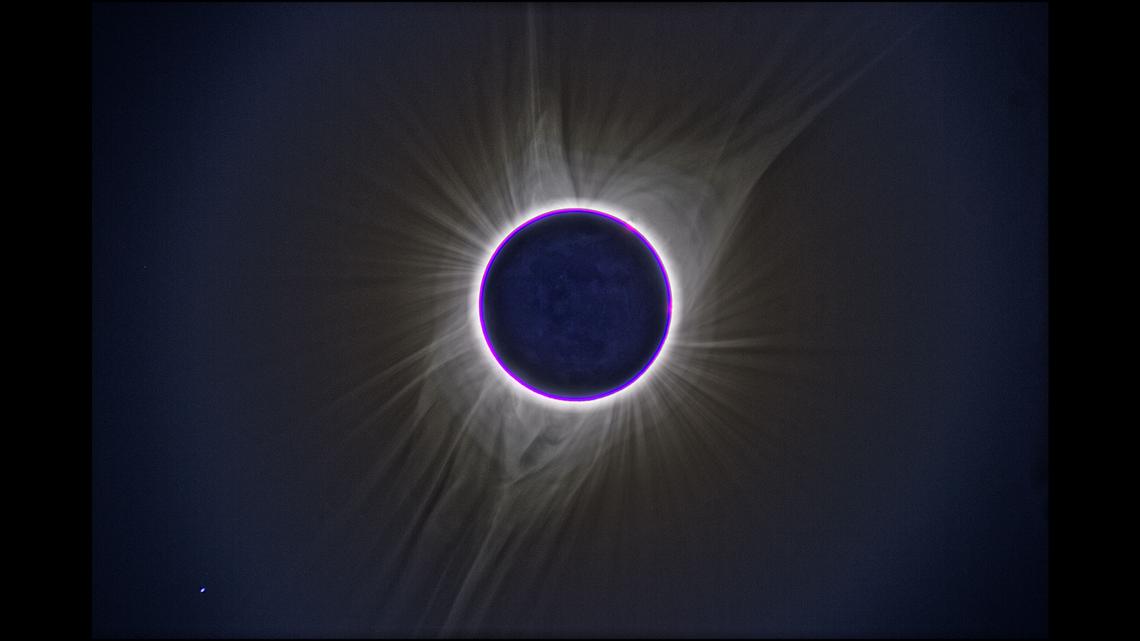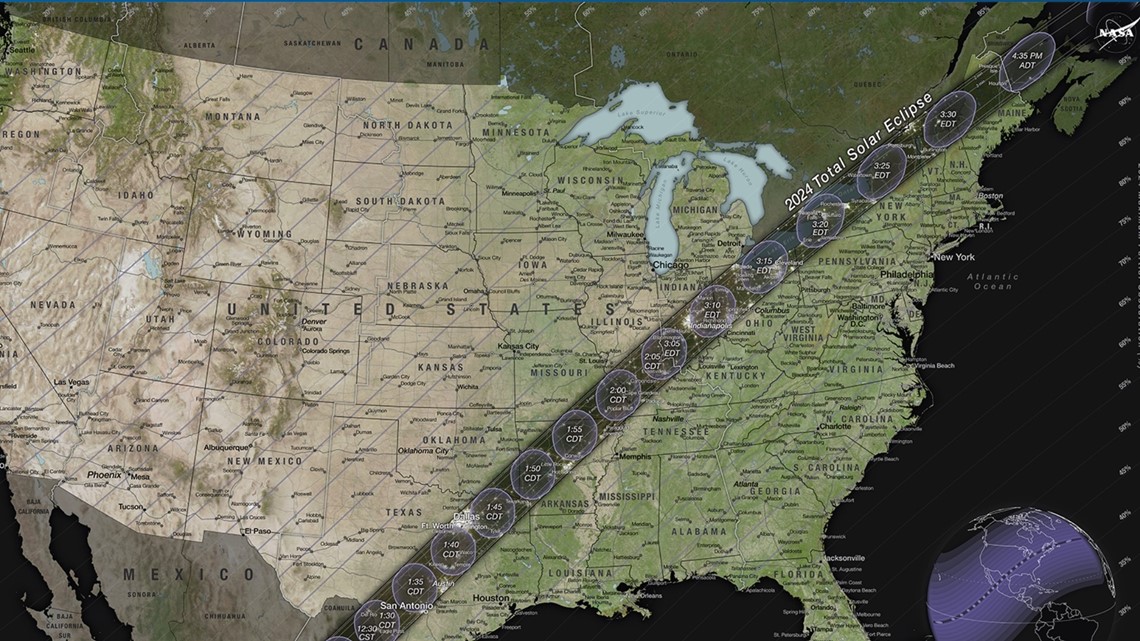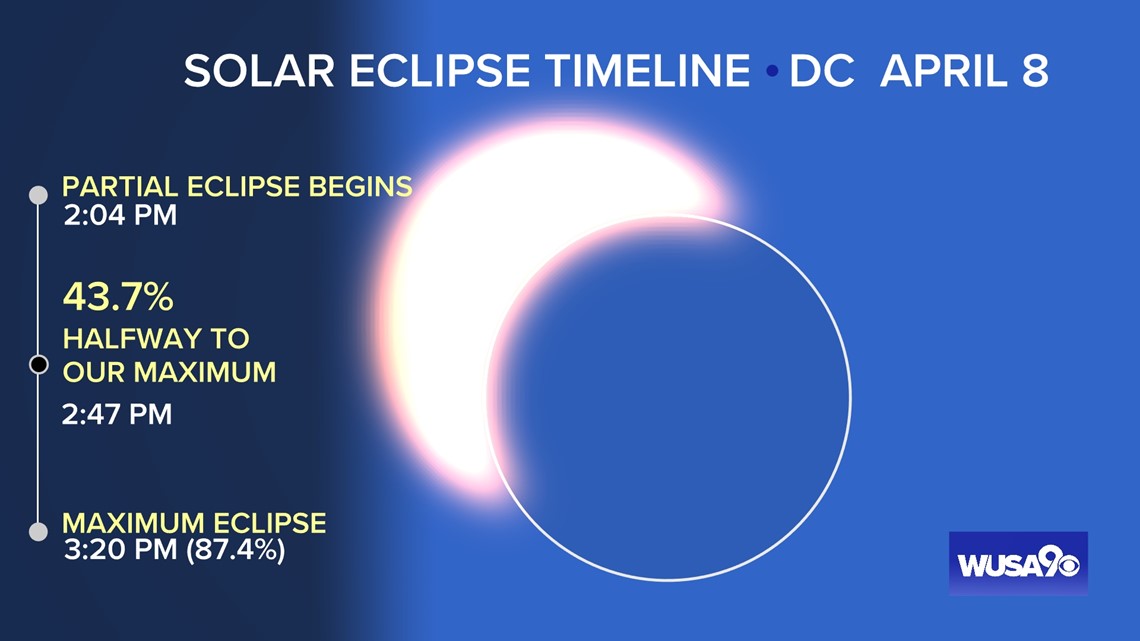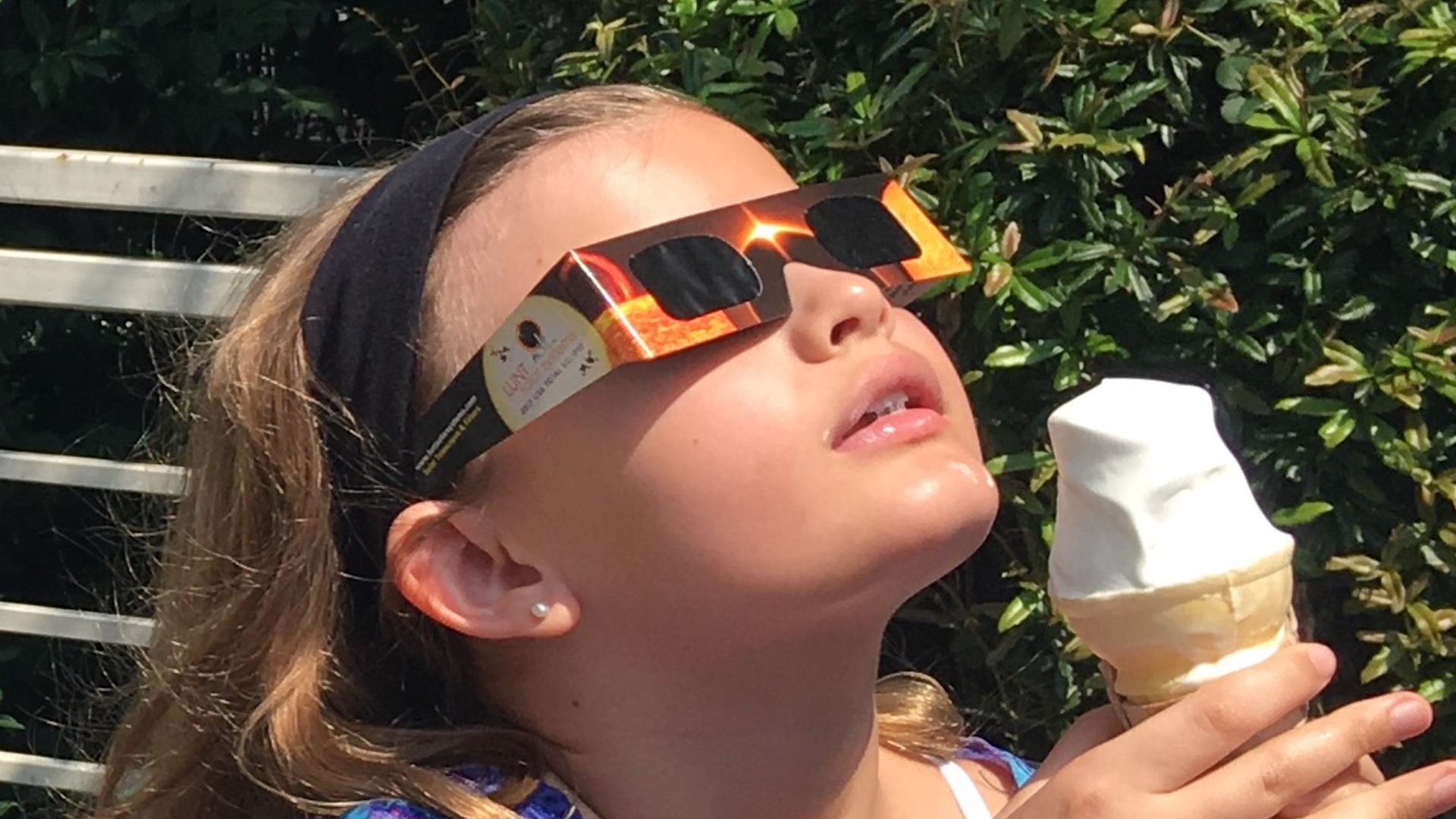WASHINGTON — Chief Meteorologist Topper Shutt headed to the U.S. Naval Observatory to talk to Public Affairs Officer Geoff Chester about the upcoming total solar eclipse. After Monday, you'll have to wait another 21 years to witness the celestial phenomenon in the U.S.
"So, these are some old books here dating back to the 15th, 16th century, when and who knew that we had eclipses?" Topper asked.
Chester responded, "While the ancients knew that we had eclipses, there is some evidence that the people that built Stonehenge built it as a very primitive Eclipse computer."
Topper asked, "So, in a broad sense, why do we have eclipses?
"Well we happen to live on a planet that has a large moon that goes around it. And that moon is relative to the Earth, it's fairly big But the unique thing about ours is that the moon is about 400 times smaller than the sun, but the sun is 400 times further away than the moon. So we have this really unique situation where the apparent diameters of the moon and the sun are very nearly identical."
With these distances and dimensions, when the moon passes in front of the sun, it will block all the sun’s visible surface. The sky will turn to twilight as the moon temporarily completely darkens and shades some parts of the Earth.
And most spectacularly, we can see the sun’s outer atmosphere, the corona.


Chester said, "That's this pearly glow that you'll see diffusing away from the sun."
Some of the other phenomena you can see during a total eclipse include the Bailey’s Beads effect. That's when lunar peaks and valleys show speckles of bright light.
And the Diamond Ring Effect. That's when bright light shines through a deep valley and you get a bright spot of light that looks like a ring with a glittering diamond.
This total solar eclipse will be visible along what’s called the path of totality. It’s a hundred and fifteen mile track that arches from Mexico and travels across the US.
To check the exact time the solar eclipse will be in your city, type in your ZIP code at NASA's interactive Eclipse Explore here.


What time will the solar eclipse start?
Entering the U.S. through Texas, the solar eclipse will begin its partial eclipse phase at around 12:20 p.m. in CDT in Dallas on Monday, April 8, according to NASA.
Totality is set to begin around 1:40 p.m. CDT until 1:44 p.m. CDT in Dallas, before completely ending at 3 p.m. CDT.
The eclipse will approach the east coast at around 1:59 p.m. EDT, in Cleveland, Ohio. Totality will begin at 3:13 p.m. and end at 3:17 p.m. EDT.
In Maine, the eclipse will begin at 2:22 p.m. EDT, with totality beginning at 3:32 p.m. EDT and ending at 3:34 p.m. EDT.
The eclipse will exit through Newfoundland, Canada at 5:16 p.m. NDT.
What time will the solar eclipse state in DC?


The partial eclipse will be visible between 2p.m. and 4:30 p.m., with the key time being at 3:20 p.m. with the sun 87.4% covered by the moon.
To see the eclipse safely you must wear special eclipse glasses to protect your eyes.
If you have glasses from the 2017 eclipse, you can use them as long as they have the same certification from ISO or CE stamped on them and they're in good shape
There is no set rule for how long a glance at a solar eclipse can cause damage, but experts say even a few seconds isn't worth the risk.
One of the risks taken while viewing a solar eclipse without the proper eyewear is solar retinopathy, also known as eclipse retinopathy. Solar retinopathy is damage to your retina from looking directly at the sun or other bright lights like lasers, according to the Cleveland Clinic.
Children are especially vulnerable to solar retinopathy, for which there is no proven treatment and can result in mild to moderate vision loss and can be permanent.
Experts say don’t be tempted to use welder’s glass or a welder’s helmet because most of those won’t block the sun’s harmful infrared light which can damage your eyes.
While you may think you would feel a burning sensation when the sun's ultraviolet (UV) rays damage the tissue of your retina, you are more likely not going to feel anything. Symptoms could take a few hours or even days to notice.
The Cleveland Clinic says symptoms of solar retinopathy include:
- Epiphora (watery eyes)
- Headaches
- Photophobia (sensitivity to light)
More serious symptoms of solar retinopathy include:
- Blurred vision
- Eye pain
- Metamorphopsia (straight lines appear rounded)
- Micropsia (objects appear smaller than they are)
- Scotoma (a blind spot in your line of sight)
Geoff said, "It's a very fleeting kind of phenomenon. Anyone who has seen one, I can almost guarantee will never forget the site. It's pretty spectacular."
Do you have a news tip on this story or any other story? We want to hear from you. Tell us about it by emailing newstips@wusa9.com.
MORE WAYS TO GET WUSA9
DOWNLOAD THE WUSA9 APP
Apple App Store: WUSA9 News on Apple
Google Play Store: WUSA9 News on Android
HOW TO ADD THE FREE WUSA9+ APP TO YOUR STREAMING DEVICE
ROKU: add the channel from the ROKU store or by searching for WUSA9.
For both Apple TV and Fire TV, search for "WUSA9" to find the free app to add to your account. Another option for Fire TV is to have the app delivered directly to your Fire TV through Amazon.
SIGN UP TO RECEIVE WUSA9 NEWSLETTER
Subscribe to our daily WUSA9 Newsletter for top stories from WUSA9 curated daily just for you. Get content and information right now for can’t-miss stories, Commanders content, weather, and more delivered right to your inbox.

